10 Funds That Can Beat the Market for Another Decade
It's difficult to find funds that can consistently beat the market over time.


It's difficult to find funds that can consistently beat the market over time. The Standard & Poor’s 500-stock index is barely scraping above breakeven in 2018, sure, but it averages 8% gains annually. The bar has been set even higher of late, with the index up 15% over the past year and 19.4% during calendar 2017.
If you want to do much better than that, you have a trying path ahead. Yes, many funds out there have beaten the index over shorter time frames. But it’s difficult to find long-term outperformers, even more difficult to find ones that look primed to continue doing so in the years ahead, and almost impossible to do without taking on a little more risk.
“You have to weight your portfolio differently than that of the greater market (e.g., the hierarchy of the S&P 500, which overweights the largest companies),” says Tim Courtney, chief investment officer of Exencial Wealth Advisors. “The question then becomes how you should weight your portfolio to do that? The bottom line is, if you want to beat the market, you have to be willing to take on more risk by weighting more towards riskier companies.”
There are other ways of taking on risk to beat the market, however, such as investing in certain closed-end funds. Some CEFs leverage debt, trade options or use other mechanisms to generate higher returns. While these methods sometimes can backfire, the most agile managers are able to squeeze the most upside out of these strategies while taming the downside.
The following 10 funds have not only beaten the S&P 500 over the past decade, but are built in such a way that they could continue to outperform over the next 10 years. Any investor that is interested in both strong returns as well as income are likely to find both in spades across this selection of funds.
Disclaimer
Data is as of March 6, 2018. Distribution rate can be a combination of dividends, interest income, realized capital gains and return of capital, and is an annualized reflection of the most recent payout. Distribution rate is a standard measure for CEFs. Fund expenses provided by Morningstar. Click on ticker-symbol links in each slide for current share prices and more.

John Hancock Premium Dividend Fund
- Market value: $722.5 million
- Distribution rate: 7.8%
- Expense ratio: 1.45%
- 10-year total return: 273.4% (versus 156.6% for the S&P 500)
The John Hancock Premium Dividend Fund (PDT, $14.96) is far from a household name. It has just more than $720 million in total assets under management, in part because a lot of investors look at its high expense ratio and run away.
But some fund managers earn their keep. Just consider that PDT has produced a 14% average annual return over the past decade compared to “just” 10% for the S&P 500. That outperformance more than covers the higher fees compared to an S&P 500-tracking ETF such as the SPDR S&P 500 ETF (SPY).
How has this closed-end fund from John Hancock performed so well? It’s invested in more than just stocks. PDT traditionally also invests in high-yielding preferred shares that tends to trade with far less volatility than regular stocks. Moreover, while its portfolio is more conservative than the S&P 500 (in addition to including preferred stocks, it has an enormous 41% exposure to utility companies), the use of leverage helps the fund “juice” its returns and distribution.
The fund has made some very savvy moves in its history, including buying preferred shares in Kinder Morgan (KMI) that fell extremely low in 2017, as well as Morgan Stanley (MS) preferreds prior to that. Management's ability to identify opportunity, then, makes PDT a candidate for continued outperformance going forward.
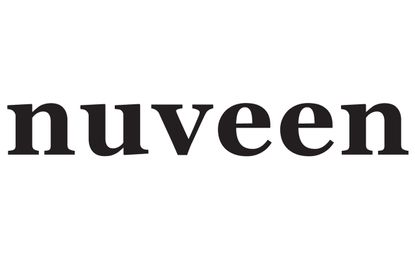
Nuveen Nasdaq 100 Dynamic Overwrite Fund
- Market value: $921.9 million
- Distribution rate: 6.7%
- Expense ratio: 0.94%
- 10-year total return: 293.4%
The Nuveen Nasdaq 100 Dynamic Overwrite Fund (QQQX, $25.18) is a tech fund with a twist. Like the PowerShares QQQ Trust (QQQ), the QQQX invests in the stocks that make up the Nasdaq-100. But it goes one step further and sells call options against those holdings.
Those call options provide a stream of income on top of the gains that investors get from the technology-heavy lineup of the Nasdaq-100. This includes familiar names such as Apple (AAPL), Alphabet (GOOGL) and Microsoft (MSFT). That’s why the QQQX can offer a 6.7% dividend yield when the QQQ doles out a meager 0.8%.
Contrarian Outlook’s Brett Owens explains the QQQX’s options-writing strategy a bit more: “QQQX’s portfolio manager, Keith Hembre, cherry-picks the stocks he wants to sell call options against. When premiums are high, he takes advantage. When they’re low, he can simply sit on his hands, hold the stocks, and wait for a better opportunity to sell calls.”

Guggenheim Strategic Opportunities Fund
- Market value: $502.7 million
- Distribution rate: 10.7%
- Expense ratio: 1.62%
- 10-year total return: 248.3%
The first thing investors notice about the Guggenheim Strategic Opportunities Fund (GOF, $20.10) is the yield. After all, an 18%-plus distribution rate is hard to miss.
GOF achieves this kind of rate through two means.
For one, its portfolio mix includes a heavy dose of bank loans and asset-backed securities, while also including smaller allocations to investment-grade corporates, junk and preferreds, among other types of debt. The fund also aggressively trades to predict the future of the yield curve.
If that sounds risky, it is. These trades can go against a fund quickly. But great risks can produce great rewards, as GOF shareholders can attest. This closed-end fund has outperformed the S&P 500 by a comfortable margin because management has been skilled at buying overly discounted corporate bonds from companies after Guggenheim’s analysts identified a big turnaround story – and falling bankruptcy rates since 2015 have proven them right.
That provides confidence that management will be able to handle the next decade just as aptly.
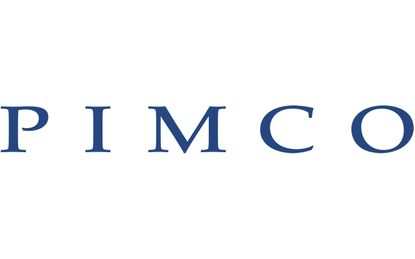
Pimco Corporate & Income Opportunity Fund
- Market value: $1.4 billion
- Distribution rate: 9.4%
- Expense ratio: 0.83%
- 10-year total return: 311.5%
The Pimco Corporate & Income Opportunity Fund (PTY, $16.69) – provided by one of the biggest names in bond products – is an actively run closed-end fund that, like GOF, bets on undervalued debt from issuers that management believes is about to see a recovery. It also bets on changes to the yield curve in credit markets.
The fact that PTY has roughly doubled the S&P 500’s total return over the past decade can be attributed to its size, in two (paradoxical) ways. Pimco’s scale and deep connections to global credit markets means PTY can profit from debt issuances most people don’t even know about (and even if they did, they might not be able to bet on them). Secondly, considering PTY only accounts for $1.4 billion of Pimco’s $1.75 trillion in assets under management, the firm can put some of its best small, experimental ideas in the fund.
Pimco says the fund utilizes a “dynamic asset allocation strategy that focuses on duration management, credit quality analysis, risk management techniques, and broad diversification among issuers, industries and sectors.” It does so through a portfolio that is most heavily weighted in mortgages (37%), high-yield credit (21%) and non-USD developed-market debt (12%) at the moment.
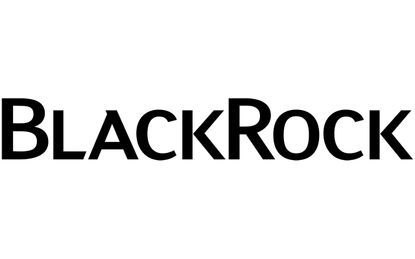
BlackRock Health Sciences Trust
- Market value: $320.8 million
- Distribution rate: 6.7%
- Expense ratio: 1.14%
- 10-year total return: 216.8%
The success of the BlackRock Health Sciences Trust (BME, $35.62) over the past decade can be chalked up both to its industry focus (health) and the fund’s unique talent.
While Wall Street typically hires financial professionals to manage clients’ money, healthcare funds (especially those that hold pharmaceutical and biotech stocks) require a different skillset. That’s why BME selected a portfolio manager, Erin Xie, whose credentials include a doctorate in biochemistry from UCLA, as well as her MBA from the Massachusetts Institute of Technology Sloan School of Management.
BlackRock Health Sciences Trust does have a few smaller companies, but more than 80% of its assets is invested in large-cap stocks, which provide not just stability but yield. Of course, you don’t get nearly 7% in annual distributions on blue-chip healthcare dividends alone – the fund also uses options to generate additional yield.
At the moment, BME has a particularly heavy weight in insurer UnitedHealth Group (UNH, 8.3%), and stocks such as Pfizer (PFE) and Abbott Laboratories (ABT) also are among top-10 holdings.

Neuberger Berman High Yield Strategies Fund
- Market value: $220.2 million
- Distribution rate: 7.7%
- Expense ratio: 1.71%
- 10-year total return: 159.1%
The Neuberger Berman High Yield Strategies Fund (NHS, $11.27) is perhaps one of the most perpetually “oversold” funds on the market, largely because it suffers from a branding problem. Neuberger Berman is a boutique asset management firm with $295 billion in assets under management – a fraction of the AUM seen at firms such as Pimco, BlackRock (BLK), Fidelity and other heavy hitters.
The company’s lack of marketing has resulted in NHS being underappreciated for some time. Its three-year average discount to net asset value sits around 12.4%, and as of this writing, it was trading at a 12.7% discount. That’s in stark contrast to many Pimco funds, which actually trade at a premium currently – but that discount may help NHS a bit in the years ahead. Greg Neer, partner and portfolio manager at Relative Value Partners, explains:
“Since closed-end funds can trade independent of their net asset value, some of the share prices increased more than their underlying assets, further increasing return. This is due to supply and demand of the fund.”
NHS, which focuses on high-yield debt, targets oversold corporate junk and uses leverage (33% currently) to amplify the income potential. Taking into account the fund’s low borrowing costs and discount, NHS can sustain its 7.7% distributions by finding bonds with an average coupon of 5.2%. That’s a lot less than the average 6% they’re paying out right now, so that income stream appears safe.

PCM Fund
- Market value: $130.9 million
- Distribution rate: 8.5%
- Expense ratio: 1.54%
- 10-year total return: 269.3%
Pimco’s PCM Fund (PCM, $11.33) invests primarily in commercial mortgage-backed securities, and it boasts a long track record of outperformance. Over the past 10 years, however, the fund has really shined, returning about 14% annually on average compared to about 10% for the blue-chip index.
This fund’s 8.5% distribution is mostly fueled by a diverse group of mortgage-backed securities (MBSs), with most of that on the shorter end of the maturity spectrum. Nearly three-quarters of the holdings have a remaining maturity of less than five years, and another 17.1% have maturities between five and 10 years. The fund’s holdings include agency-guaranteed MBSes, private-label MBSes, commercial MBSes and a few other debt products such as junk and investment-grade corporate bonds.
PCM Fund also uses a liberal amount of leverage (38%) to generate its high distribution rate.

Pimco Corporate & Income Strategy Fund
- Market value: $669.1 million
- Distribution rate: 7.9%
- Expense ratio: 0.93%
- 10-year total return: 270.3%
Like PCM, Pimco Corporate & Income Strategy Fund (PCN, $17.08) does invest some of its portfolio into mortgage-related products to generate yield.
However, this is a much more diversified fund. Non-agency mortgages (37%) make up the largest part of the fund, but PCN also holds significant weight in junk debt (20%), non-USD developed-market debt (11%) and emerging-market bonds (9%). It even has small amounts of investment-grade corporates, U.S. government and even muni bonds.
That blend – as well as about half the leverage (18%) – explains why PCN delivers a slightly smaller distribution than PCM Fund. Still, depending on your goals, Corporate & Income Strategy may be more appealing because of its ability to extend into a number of areas and rebalance as certain types of securities become more or less attractive.

John Hancock Financial Opportunities Fund
- Market value: $749.1 million
- Distribution rate: 3.7%
- Expense ratio: 1.75%
- 10-year total return: 241.3%
Good management tends to make the difference when it comes to closed-end funds, and that’s clearly the case at John Hancock Financial Opportunities Fund (BTO, $40.25), which is 90% large- and mid-cap stocks primarily in the financial sector, but also has sprinklings of corporate bonds, preferred securities and other assets.
Just like funds such as the Financial Select Sector SPDR (XLF), BTO was clobbered during the financial crisis. But it has roared back since then, delivering a 742.5% total return out of the bear-market depths, dwarfing the still-outstanding 562.1% of the XLF.
BTO’s portfolio doesn’t look much different from a standard financial-stock fund. Top holdings such as JPMorgan Chase (JPM), PNC Financial (PNC) and M&T Bank (MTB) are typical large holdings of many other bank funds.
John Hancock Financial Opportunities’ portfolio is expected to continue benefitting from higher interest rates (which will in turn help investment income at the country’s banks), declining bankruptcies and an overall healthier economy. Meanwhile, thanks to a little leverage, BTO delivers more yield than your standard financial fund.

Pimco Income Opportunity Fund
- Market value: $389.4 million
- Distribution rate: 8.8%
- Expense ratio: 1.72%
- 10-year total return: 234.5%
The last fund on this list is another Pimco gem. The Pimco Income Opportunity Fund (PKO, $25.80) holds a diverse portfolio of corporate-grade and junk debt that helps fund a generous distribution rate of nearly 9%. Like PCN, PKO is a small fund in a bit company that gives investors the agility to profit from more niche opportunities while benefiting from the infrastructure and expertise of a firm that oversees trillions of dollars.
The differences between these funds, in fact, are subtle but important. While PCN is a corporate-first fund, PKO is more unconstrained, which means it can allocate whatever it wants to just about any kind of debt instrument it wants. It’s a bet on the expertise of Pimco’s managers to use complex instruments to your advantage. That may feel risky, but it can also generate significant rewards.
At the moment, that means a larger percentage of the portfolio dedicated to mortgage-related products (53%), with slightly less invested in just about every other sector to compensate.
Another key difference is leverage. PKO has a 35.5% leverage ratio right now, which is roughly twice PCN’s. That translates into a higher distribution rate at the moment, sure. But in theory, that also could mean a larger drop in a market correction.
Get Kiplinger Today newsletter — free
Profit and prosper with the best of Kiplinger's advice on investing, taxes, retirement, personal finance and much more. Delivered daily. Enter your email in the box and click Sign Me Up.

-
 How to Manage Risk With Diversification
How to Manage Risk With Diversification"Don't put all your eggs in one basket" means different things to different investors. Here's how to manage your risk with portfolio diversification.
By Charles Lewis Sizemore, CFA Published
-
 How Couples Can Manage Different Retirement Timelines
How Couples Can Manage Different Retirement TimelinesStaggered retirement is increasingly common, but it can create financial and emotional challenges.
By Sandra Block Published
-
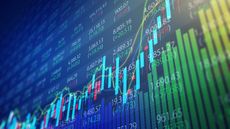 Stock Market Today: Muted Inflation Data Sparks Relief Rally
Stock Market Today: Muted Inflation Data Sparks Relief RallyEncouraging news about the path of consumer prices sent risk assets soaring again.
By Dan Burrows Published
-
 Stock Market Today: The Dow Adds 15 Points To End Its Losing Streak
Stock Market Today: The Dow Adds 15 Points To End Its Losing StreakEquity indexes opened higher but drifted lower as markets priced in new Fed forecasts.
By David Dittman Published
-
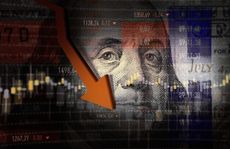 Stock Market Today: Dow Dives 1,123 Points After Fed
Stock Market Today: Dow Dives 1,123 Points After FedMarket participants reacted predictably to a well-telegraphed hawkish turn by the Federal Reserve.
By David Dittman Published
-
 Fed Sees Fewer Rate Cuts in 2025: What the Experts Are Saying
Fed Sees Fewer Rate Cuts in 2025: What the Experts Are SayingFederal Reserve The Federal Reserve cut interest rates as expected, but the future path of borrowing costs became more opaque.
By Dan Burrows Published
-
 Stock Market Today: The Dow Slides Into Its First 9-Day Losing Streak Since 1978
Stock Market Today: The Dow Slides Into Its First 9-Day Losing Streak Since 1978A Santa Claus rally is on hold as markets wait for more information about monetary policy.
By David Dittman Published
-
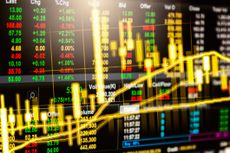 Stock Market Today: Stocks Are Mixed Ahead of the Fed
Stock Market Today: Stocks Are Mixed Ahead of the FedTwo of the three main equity indexes closed higher on the first day of the final Fed Week of 2024.
By David Dittman Published
-
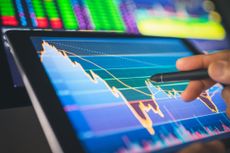 Stock Market Today: Broadcom Earnings Boost the Nasdaq
Stock Market Today: Broadcom Earnings Boost the NasdaqBroadcom became the latest member of the $1 trillion market-cap club after its quarterly results, while RH also rallied on earnings.
By Karee Venema Published
-
 Stock Market Today: Dow Logs Longest Losing Streak Since April
Stock Market Today: Dow Logs Longest Losing Streak Since AprilThe November Producer Price Index showed that inflation remains a tough beast to tame.
By Karee Venema Published
